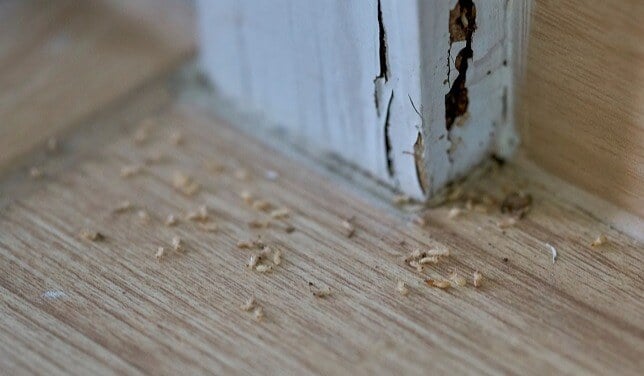
Does Virginia have termites?
Termites are a common pest problem in Virginia. They quietly work underground and behind walls, carving dark tunnels of mud in and around your home, eating as they go. Virginia's warm and humid climate is just right for two of the most destructive types, eastern subterranean termites and Formosan termites. Although most active from spring to fall, these types of termites can feed on wood and other forms of cellulose 365 days a year in the right conditions. Unfortunately, is it's not a matter of if you will encounter termites as a homeowner in Virginia; it's when. The good news is that termite damage is preventable if you stay on top of this troublesome pest.
Exterior signs of home termite damage
Termites are difficult to detect. While it's best to hire a termite professional for an annual inspection, there are some signs of damage you can look for around your home regularly. Look for any of these signs and then do further investigation.
Physical damage to wood
Wood decks are the ideal place to check for termite activity such as swarming. You might also notice outright damage to wood, but less obvious signs are springy deck boards, sunken and rippled surfaces, and hollow-sounding wood. To differentiate termite damage from water damage, look for mud tubes and channels in the wood.
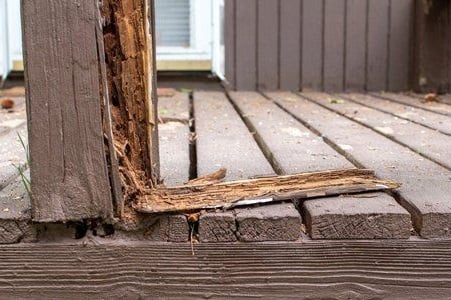
Mud tubes
Termites build mud tubes on the interior walls of your home's foundation to travel and avoid light but can be seen on exterior walls and home decks. These travel tunnels might be located under leaves and debris where it is dark and moist.
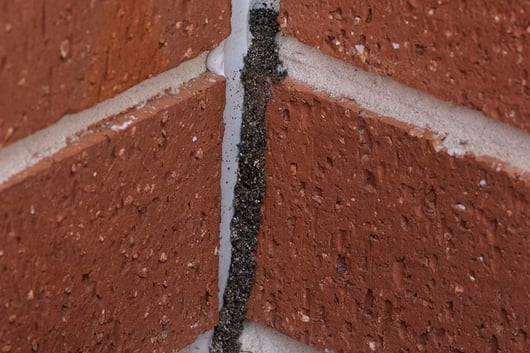
Flying termites
Swarmers are large groups of adult stage winged insects called alates. You might catch them flying in swarms out of the ground or a crack on foundation or concrete in the spring. The problem is that this life stage event is short-lived and easily missed outside. You are more likely to see the pile of wings that are discarded shortly after the swarm activity. Unlike other termites stages, swarmers will flock towards light sources.
Food sources
Check areas with dark and wet termite food sources close to your home, such as wood decks, old logs, fallen trees, brush, stumps, construction materials, wooden landscape borders, and rotting wood that sit on the ground. Look for any signs of termite activity mentioned in this article. Avoid attracting termites to your home by keeping these lures at least 20 feet away.
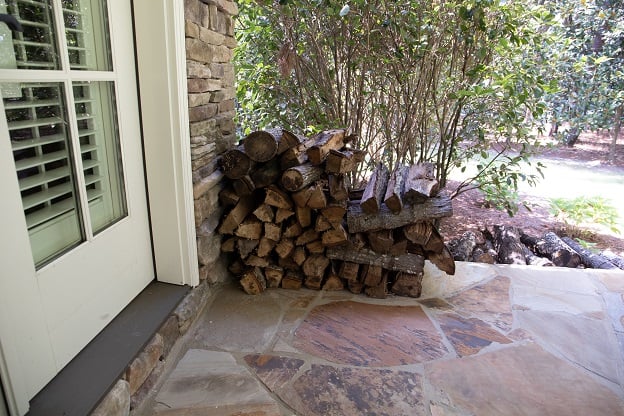
Interior signs of home termite damage
Seeing interior signs of termite activity is a very good indicator that you have a progressed home infestation. If you see any of the following symptoms, call a termite treatment specialist right away.
Mud tubes
Shelter tubes on surfaces create a pathway from the ground to the wood of a home, a tell-tale sign that termites have entered and infested your home.
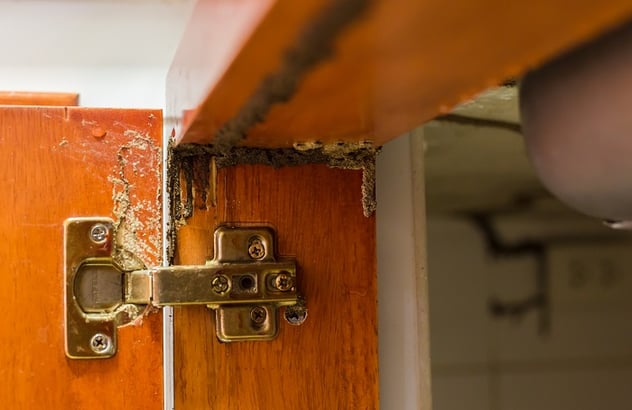
Hollow wood
Do a knocking test if you notice a wall or floor area that looks different from the rest with cracks on the surface or splitting. It's easy to hear the difference between papery, hollow wood, and solid wood. If you can hear these differences, it may signify that the timber has internal damage.
Swarming activity
It's far less likely you'll miss those same adult stage termites in flight on the inside of your home. If you see a sudden swarm flying or crawling on the interior walls of your home or find a bunch of discarded long white wings, you likely have a home infestation. At this time, you may also notice tiny exit holes in wood or drywall.
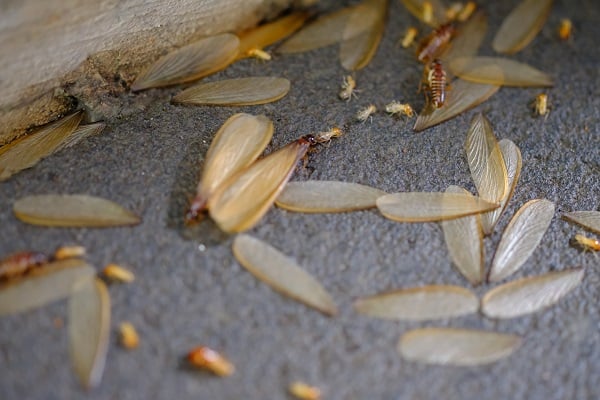
Sounds
If you have excellent hearing, subterranean termites do make noise. Besides munching on wood, the insects warn each other of danger by banging their heads and shaking their bodies. It sounds like clicking to the human ear. You also may hear what sounds like paper rustling as termites move in your walls.
Physical damage to wood or drywall
Drywall may be sagging or cracked as a symptom of the termite damage you can't see. You also may notice blistering, buckling wood floors, swollen panels, or soft wood that's easily probed with a knife or screwdriver. Termites will also eat drywall paper and even destroy carpets, furniture, cloth, books, and other cellulose materials.
Soft or rotting wood can also happen from extended water damage, so look for mud tubes with the damaged areas. Water damage may also be darkened, more spongy, and have a musty smell.
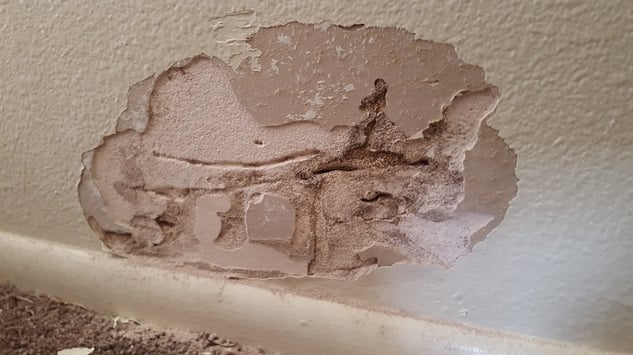
Dead termites
Older termites do die while the next generation is alive and well inside your walls. If you notice a group of dead bugs that resemble white/creamy or transparent-looking ants, you have termites. Ants, even winged ones, are always black.
Termite excrement
Also known as frass, these tiny balls of digested wood get pushed out into the open by termites as they clean their travel tubes. You may notice this distinct light brown colored matter on an interior floor.
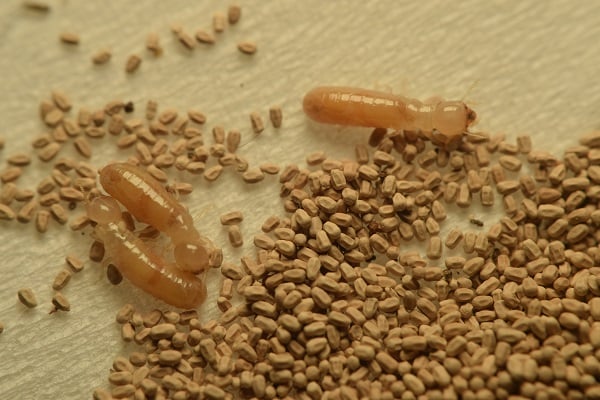
Windows and doors that are hard to open or shut
Chewed wood damage is an obvious sign of termite damage to windows and doors, but difficulty opening or closing them can be an early sign of termite activity as well. The insects create moisture as they feed, causing wood home components to warp and change shape. Hot and humid weather in Virginia can also cause doors and windows to warp and swell.
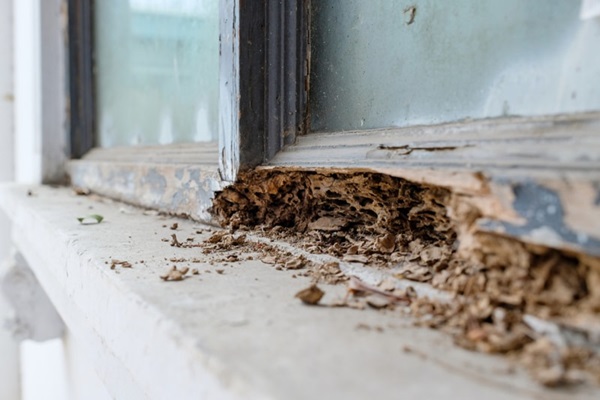
Does home insurance cover termite damage?
Most home insurance policies do not cover termite damage. Home repairs from insects and other pest damage are preventable and can be controlled by routine maintenance. That's why it's crucial to catch an infestation early to limit a costly out-of-pocket expense to treat and fix your home. While you can check for signs of potential termite damage both inside and out, a licensed and insured termite specialist will give you the most accurate diagnosis of a termite problem in your Virginia home. A licensed termite service can also provide treatment and a warranty.
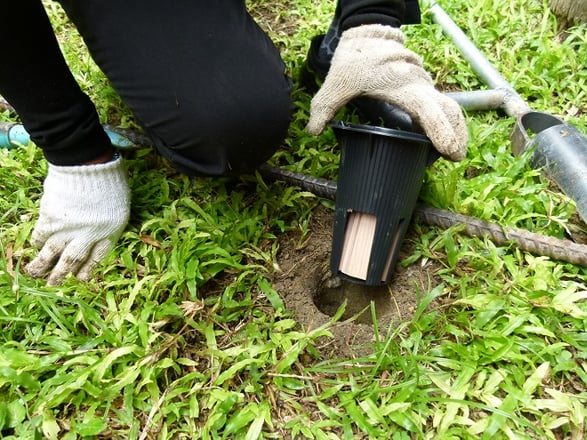
How much does a termite inspection cost in Virginia?
Termite inspections run between $50 and $200, depending on the size of your home and your location. Termite inspection services utilize special moisture sensors, heat sensors, and sound sensors to detect insects. The service provides valuable information and detects termites when no visible symptoms are present. Early detection is key to protecting your home and avoiding significant expenses later.
Termite inspections are not required in Virginia when purchasing a new home unless a VA loan is involved. Be sure to insist on adding this critical inspection to your home buying checklist while negotiating your sale. If the seller does not pay, spend the extra money for peace of mind. If termites are discovered, you can also negotiate the cost of extermination.
Learn more about homeowners insurance in Virginia >
THE NORTHERN NECK INSURANCE INTEGRITY PROMISE — We pledge to provide straight talk and good counsel from our NNINS Virginia insurance experts through our blog. While we hope you find this to be a helpful source of information, it does not replace the guidance of a licensed insurance professional, nor does it modify the terms of your Northern Neck Insurance policy in any way. All insurance products are governed by the terms in the applicable insurance policy.

